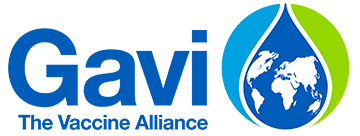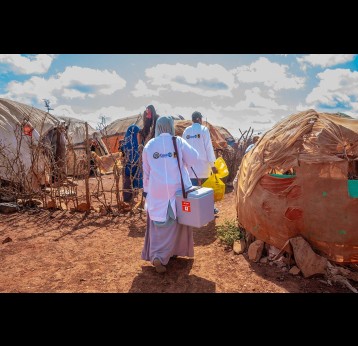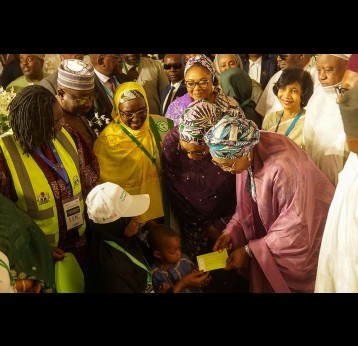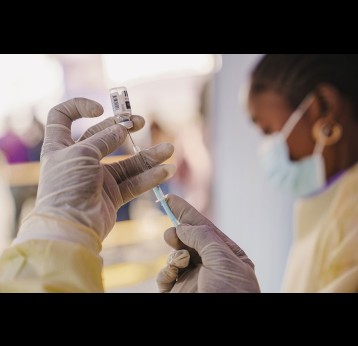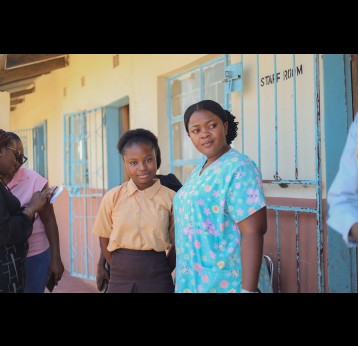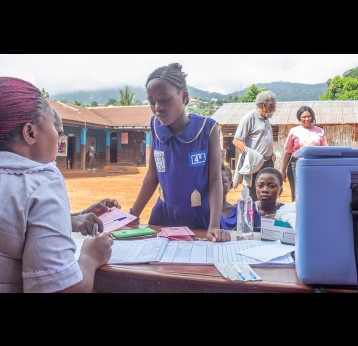Country Information
Key immunisation indicators
Data sourcesApprovals are a subset of commitments for which funding availability and programme performance has been assessed as satisfactory. Only such approved amounts can be disbursed subject to all other conditions for disbursement being met by the countries. Approvals are typically granted for the current year and one further year.
Commitments represent endorsements of multi-year programme budgets made by the Gavi Board, Executive Committee or the CEO. These endorsements do not constitute a liability to pay but instead send a positive signal that Gavi intends to fund a programme over its entire life span subject to performance and availability of funds.
Disbursements by 'Programme Year' in the graph shows the payments made from 2020 up to the date of the report. The payments are shown by the programme year to which they relate irrespective of the calendar year in which they were made. The programme year is the year in which the relevant vaccine/cash programme is being implemented.
Annual figures may reflect negative values due to refunds from previous years or allocation of prepayments to reflect actual apportionment by country.
Disclaimer: the boundaries and names shown and the designations used on this map do not imply the expression of any opinion whatsoever on the part of Gavi, the Vaccine Alliance concerning the legal status of any country, territory, city or area or of its authorities, or concerning the delimitation of its frontiers or boundaries. Dotted lines on maps represent approximate border lines for which there may not yet be full agreement.
This Gavi country data is made available under the Creative Commons BY 4.0 license: https://creativecommons.org/licenses/by/4.0/
Latest News
All News
As delegates from around the world and across the private sector and civil society gather for the 2025 World Health Summit, the REACH consortium has officially administered over 20 million vaccine doses to children in humanitarian and conflict-…
Nigeria launches historic integrated vaccination campaign targeting 100 million children
The Federal Ministry of Health of Nigeria supported by partners today launched the country’s largest-ever integrated vaccination campaign, aiming to reach about 109 million children aged 9 months to 14 years with vaccines against measles-rubella…
Vaccines will be delivered to countries affected by the upsurge of mpox that continues to constitute a Public Health Emergency of International Concern (PHEIC). The first shipment of 11, 200 doses arrived in Nigeria on 20 December.
Unitaid and Gavi establish new partnership to improve access to cervical cancer prevention
Unitaid and Gavi will pilot integrated cervical cancer screening and treatment with HPV vaccination programs through a new partnership.
Nigeria receives malaria vaccines ahead of roll-out
In a historic step toward combating malaria in Nigeria, the first-ever malaria vaccines have been delivered to the Government of Nigeria, thanks to efforts by Gavi, the Vaccine Alliance, UNICEF and WHO.
Nigeria to vaccinate 7.7 million girls against leading cause of cervical cancer
Nigeria today introduced the human papillomavirus (HPV) vaccine into its routine immunisation system, aiming to reach 7.7 million girls. This is the largest number in a single round of HPV vaccination in the African region in a vaccination drive…
Over the next few years, Gavi, the Vaccine Alliance and partners will focus efforts to revitalise access to the human papillomavirus (HPV) vaccine to reach 86 million adolescent girls, rapidly recover and improve coverage, and help build…
Funding disbursed to boost vaccine access in humanitarian and fragile settings
The funding will enable international and local civil society organisations to complement public health service efforts by accessing communities not reached by government services, such as in cross-border settings and conflict zones, across the…
Gavi launches new learning initiative to address the final barriers to immunisation equity
Reaching the millions of “zero-dose” children who have yet to receive a single vaccine represents one of the final – and most complex – barriers to overcome in the push for global immunisation equity
Data sources
| Name | Source | Date |
|---|---|---|
| Total population, 2024 | United Nations, World Population Prospects (UN WPP), July 2024 release | 2024-07-11 |
| Birth cohort (live births), 2024 | United Nations, World Population Prospects (UN WPP), July 2024 release | 2024-07-11 |
| Surviving infants (infants surviving to 1 year), 2024 | United Nations, World Population Prospects (UN WPP), July 2024 release | 2024-07-11 |
| Infant mortality rate (deaths <1 year per 1,000 births), 2023 | UN Inter-agency Group for Child Mortality Estimation (UN IGME), March 2025 release | 2025-03-25 |
| Under-five mortality rate (deaths <5 years per 1,000 births), 2023 | UN Inter-agency Group for Child Mortality Estimation (UN IGME), March 2025 release | 2025-03-25 |
| Gross national income (GNI) per capita, Atlas method (current US$), 2024 | World Bank national accounts data, and OECD National Accounts data files, July 2025 release | 2025-07-01 |
| Zero-dose children, 2024 | WHO/UNICEF Estimates of National Immunization Coverage (WUENIC), July 2025 release; figures calculated using number of surviving infants from UN World Population Prospects (UN WPP) | 2025-07-15 |
| % reduction in number of zero-dose children, 2019–2024 | WHO/UNICEF Estimates of National Immunization Coverage (WUENIC), July 2025 release; figures calculated using number of surviving infants from UN World Population Prospects (UN WPP) | 2025-07-15 |
| DTP1/DTP3/MCV1 coverage (%), 2024 | WHO/UNICEF Estimates of National Immunization Coverage (WUENIC), July 2025 release | 2025-07-15 |
| Drop-out from DTP1 to DTP3, 2024 | WHO/UNICEF Estimates of National Immunization Coverage (WUENIC), July 2024 release | 2025-07-15 |
| Drop-out from DTP1 to last routine dose of MCV, 2024 | WHO/UNICEF Estimates of National Immunization Coverage (WUENIC), July 2025 release | 2025-07-15 |
| Geographic equity of DTP3 coverage in 20% of districts with lowest coverage, 2024 | WHO/UNICEF Joint Reporting Form (JRF), July 2025 release | 2025-07-03 |
